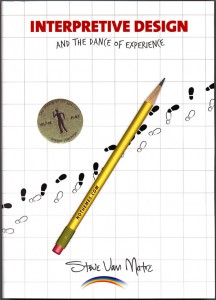1/2
Choosing a Course: Interpretation
INTERPRETIVE DESIGN
WORKSHOP
I nterpretation is the craft of enriching the experience of leisure visitors with places established for the public good. The world’s parks and preserves, gardens and galleries, monuments and museums are the jewels of our societies, set aside because they represent the natural and cultural treasures we want to celebrate today and share with others tomorrow. As a result, they are mission-driven places which also need to justify and garner support for what they are protecting. An interpreter translates the natural and cultural language of such places for its visitors, while immersing them in the essence of its purpose. Interpretive designers create the leisure journeys that interpreters implement. Just as we have designers today for the buildings, signs, grounds, exhibits, and other components of our mission-driven public places, we need “interpretive designers” who focus on the most important component, the actual experience of the visitors who come. This is a new profession which works with the whole experience that other designers only facilitate in part. Interpretive designers create the interrelated experiential vehicles of interpretive service. Interpretive Design is for all those who assist visitors in getting to know their public jewels — leisure sites from Aquaria to Zoos — and who aim to enrich those visitors’ experiences in meaningful and memorable ways. In this workshop, participants take away:
As a result, they are mission-driven places which also need to justify and garner support for what they are protecting. An interpreter translates the natural and cultural language of such places for its visitors, while immersing them in the essence of its purpose. Interpretive designers create the leisure journeys that interpreters implement. Just as we have designers today for the buildings, signs, grounds, exhibits, and other components of our mission-driven public places, we need “interpretive designers” who focus on the most important component, the actual experience of the visitors who come. This is a new profession which works with the whole experience that other designers only facilitate in part. Interpretive designers create the interrelated experiential vehicles of interpretive service. Interpretive Design is for all those who assist visitors in getting to know their public jewels — leisure sites from Aquaria to Zoos — and who aim to enrich those visitors’ experiences in meaningful and memorable ways. In this workshop, participants take away:
- Why interpretation is neither art, science, nor communication
- Three essential elements of the Language of Place
- Practical exercises for extracting essence (the alchemy of interpretive design)
- Tools for mapping the forces, features, and facets that make up any place
- 15 Developmental Steps for structuring the dance of experience
- Key Password Questions interpretive designers use daily
- Practice in developing an Interpretive Matrix for the outcomes of any site
2/2
Choosing a Course: Interpretation
INTERPRETIVE DESIGN
PRACTICUM
The Interpretive Design Practicum offers those who have participated in the Interpretive Design Workshop an opportunity to apply their understanding of interpretive design to an actual public jewel. Following the 15 steps in the “dance of experience,” they analyze what’s happening at a site, identifying its interpretive strengths and weaknesses. Interpretive design is not just about coming up with fresh ideas; it is about knowing where those ideas are needed (and why). Once those needs have been identified, the design work can begin. Interpretive design is about defining clear, meaningful outcomes and focusing intently on ways to achieve them in a memorable fashion. In this context, a primary skill for the interpretive designer is being able to determine what action is likely to achieve something and fitting it smoothly into a whole. That’s why thematic interpretation often produces such poor results. Themes are easy because the fitting is easy. In interpretive planning they can become a shallow substitute for the deeper and more rigorous thinking required about the visitor’s overall experience in relation to the essence of the place and its mission. To avoid such problems, the “dance of design” involves 7 sequential design steps, from visiting a place and studying its interpretive tools to generating ways of achieving interpretive integrity, coherence, and harmony there. In the practicum, the participants apply those steps to crafting a framework for an interpretive plan of a specific site. It is hard work, but richly rewarding. During the workshop, participants:
- Review the 15 steps in the “dance of experience”
- Analyze the dance of experience at a site
- Learn the 7 steps in the “dance of design”
- Identify the most important interpretive needs at a site
- Generate potential solutions for design problems and needs
